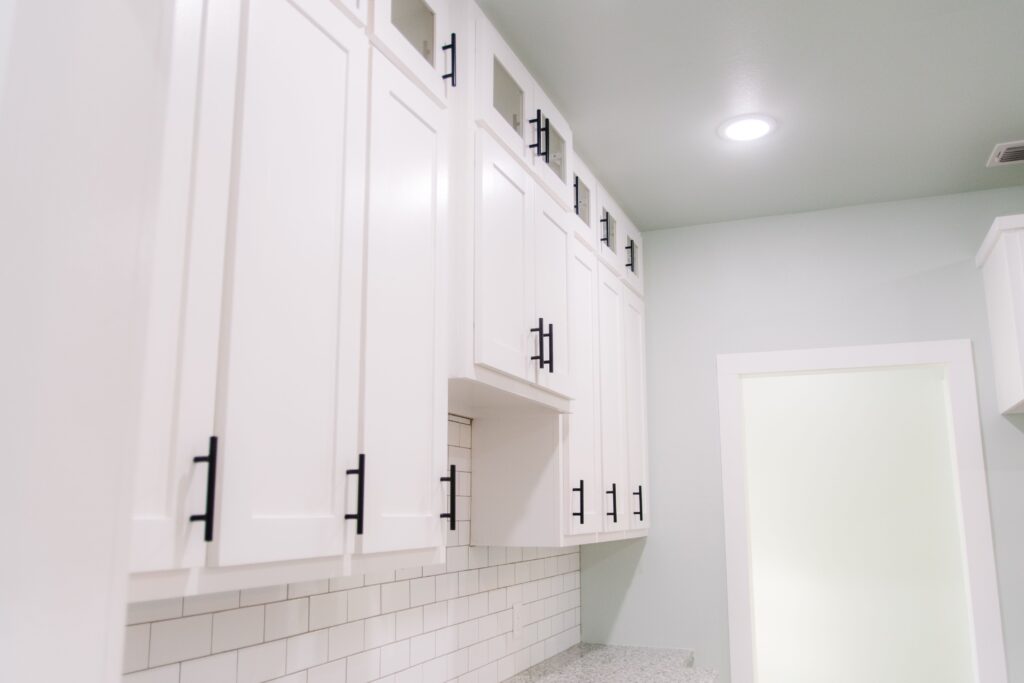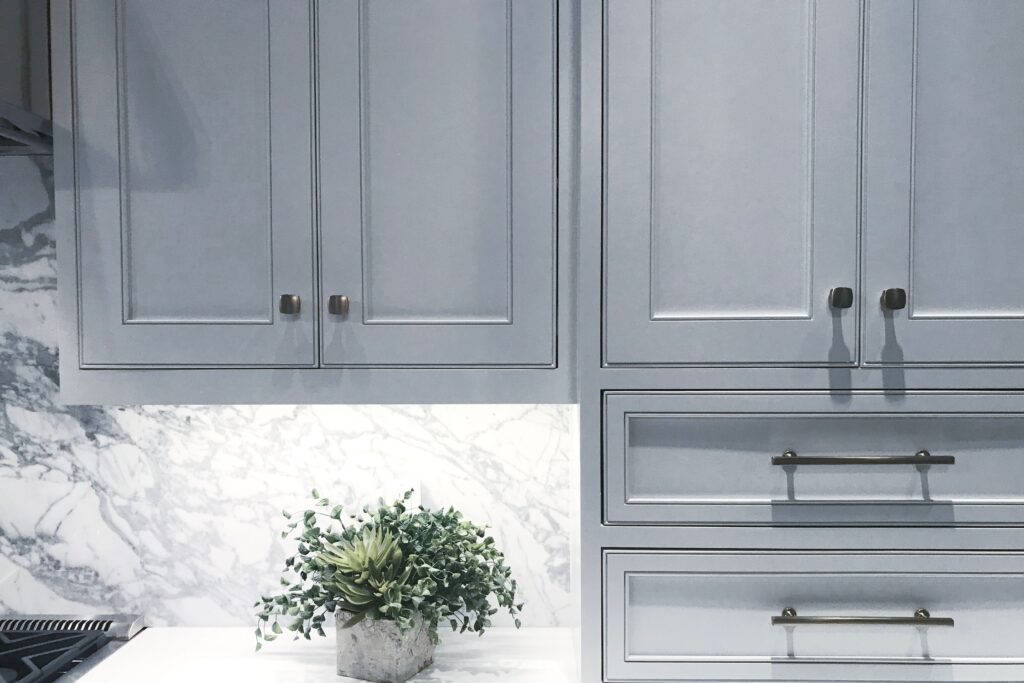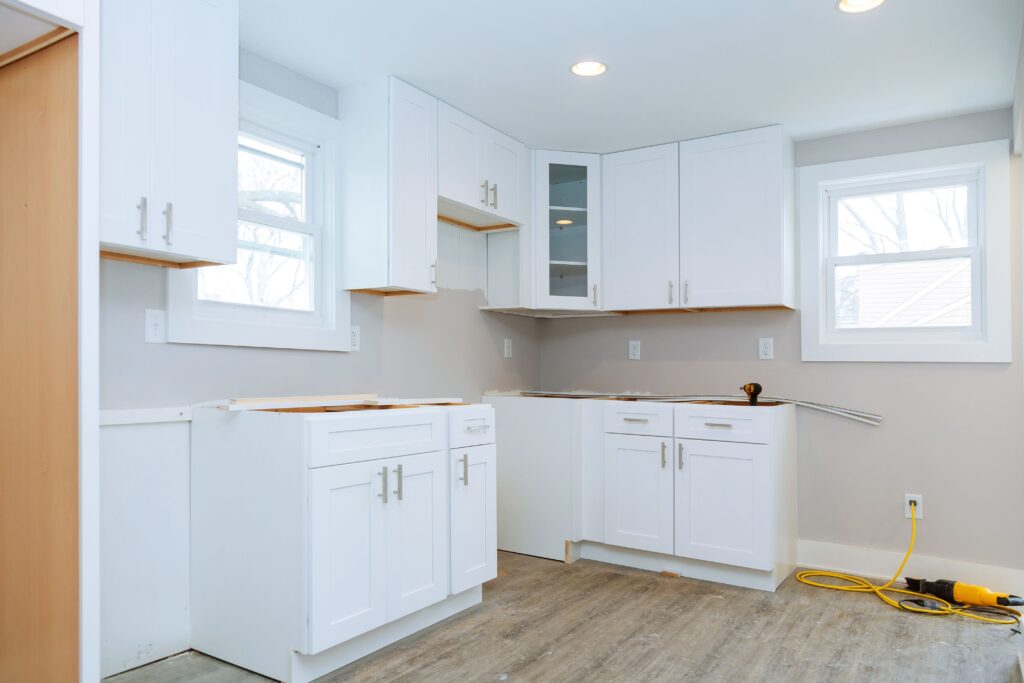
Expert Tips for Refinishing Kitchen Cabinets
Refinishing them is the perfect solution to give your kitchen a fresh new look without breaking the bank. But where do you start? Don’t worry, we’ve got you covered with expert tips on refinishing kitchen cabinets like a pro. From choosing the right paint to sanding techniques and finishing touches, this guide will help you achieve the look you want for your dream kitchen.
What is Refinishing Kitchen Cabinets?
Refinishing kitchen cabinets is the process of stripping, sanding, and staining or painting your kitchen cabinet to give them a fresh, new look. It’s a budget-friendly alternative to replacing your cabinets entirely, and it can be done in as little as a weekend.
If you’re thinking about refinishing kitchen cabinets, here are a few things to keep in mind:
1. Decide what look you want to achieve. Are you going for a glossy, modern finish or a rustic, distressed look?
2. Choose the right type of paint or stain. If you want a durable finish that will withstand grease and cooking splatters, consider using an oil-based paint or stain. Water-based finishes are easier to work with and clean up, but they may not be as tough as oil-based finishes.
3. Prepare your workspace. Make sure you have plenty of ventilation and protection from dust and fumes. Cover any surfaces that you don’t want to be painted or stained, such as countertops and appliances.
4. Strip the old finish off your cabinets. This can be done with chemical strippers or sandpaper. Follow the manufacturer’s instructions carefully when using chemical strippers and work in a well-ventilated area.
5. Sand the cabinets smoothly. Once the old finish is gone, use progressively finer grits of sandpaper until the surface is smooth. Dust can be removed with a damp cloth.
6. Apply the new finish. Use a brush or roller to apply the paint or stain, following the manufacturer’s instructions. Allow ample drying time between coats, and sand lightly in between each coat if necessary.
7. Add a topcoat for extra shine and protection. If you’re using paint, add an additional coat of polyurethane to protect the finish and give it extra shine. If you’re using a stain, you may want to apply a protective varnish as well.
Preparing Your Cabinets for Refinishing

Expert Tips for Refinishing Kitchen Cabinets
If you’re planning to refinish your kitchen cabinet, there are a few things you need to do to prepare them. To begin, remove all the hardware from the doors and drawers.
Next, cleaning the cabinets with a degreaser is a good idea. Once the cabinets are clean, sand them down with fine-grit sandpaper. Then, wipe down the cabinets with a damp cloth to remove any dust from the sanding.
Finally, apply a primer to the cabinets before painting or staining them.
Types of Finishes for Cabinets
There are many different types of finishes that can be used in refinishing kitchen cabinets. The type of finish you choose will depend on the look you want to achieve and the level of durability you need.
- Paint is one of the most popular choices for refinishing kitchen cabinets. The process is relatively inexpensive and can be applied quickly. Paint can also be easily touch-up if it becomes scratched or chipped. However, paint does not offer much protection from wear and tear and will eventually need to be reapplied.
- Stain is another popular choice for refinishing kitchen cabinets. It penetrates the wood grain, providing a more durable finish than paint. Stain can also be used to create a variety of looks, from a natural finish to a dark, rich color. However, the stain is more difficult to apply than paint and can be tricky to touch up if damaged.
- Polyurethane is a clear coating that is applied over stained or painted cabinets. It provides extra protection from wear and tear and makes it easier to clean cabinets. Polyurethane can also yellow over time, so it is important to choose a high-quality product that will resist fading.
- Lacquer is a high-gloss finish that is applied over stained or painted cabinets. It creates a sleek, modern look but requires regular maintenance to keep it looking its best. Lacquer can also yellow over time, so it is important to choose a high-quality product that will resist fading.
- Varnish is a flexible coating that can be applied over stained or painted cabinets. It offers good protection from wear and tear and makes it easy to clean cabinets. However, varnish can yellow over time, so it is important to choose a high-quality product that will resist fading.
Step-by-Step Guide for Refinishing Kitchen Cabinets
- Decide if you want to refinish your cabinets yourself or hire a professional. If you decide to do it yourself, make sure you have the time and patience for the project.
- Remove everything from your cabinets and clean them thoroughly.
- Sand down your cabinets to create a smooth surface for painting or staining.
- If you are painting your cabinets, apply a primer before painting.
- Choose the paint or stain color that you want for your cabinets and apply it evenly. For best results, use a brush or roller specifically designed for painting cabinets.
- Once the paint or stain is dry, apply a clear coat to protect the finish and give your cabinets a shine.
- Replace the hardware on your cabinets, such as hinges, knobs, and handles.
- Reinstall anything you removed before starting the project, such as shelves or drawers.
Expert Tips for Applying a Perfect Finish
1. Start with a clean surface. Thoroughly clean your cabinets with a degreaser and sand them lightly before beginning to apply paint or stain. This will help the new finish adhere better and create a smoother overall appearance.
2. Consider using a primer. If your cabinets are made of porous wood or have any previous finishes that might be peeling, it’s a good idea to use a primer before applying paint or stain. This will help seal the surface and ensure an even finish.
3. Choose the right type of paint or stain. For kitchen cabinets, it’s best to use either semi-gloss or high-gloss paint, as these finishes are more resistant to moisture and staining than flat or eggshell finishes. When selecting a stain, opt for one that is specifically designed for use on cabinets; these products will offer better protection against heat and spills than general-purpose stains.
4. Follow the manufacturer’s directions. Be sure to read the instructions on your paint or stain carefully before starting; this will help you achieve the best possible results. In general, you’ll want to apply several thin coats rather than one thick coat and allow each coat to dry completely before moving on to the next.
5. Protect your work area from drips and spills. Cover countertops and floors with drop cloths or old newspapers before beginning to refinish your cabinets; this will make cleanup much easier if you happen to make any messes.
6. Use the right tools. For a professional-looking finish, use a high-quality brush or foam roller to apply paint or stain. It’s also a good idea to invest in some painter’s tape to ensure that your edges and trim look neat and clean.
How to Avoid Common Mistakes in Refinishing Kitchen Cabinets
1. Not sanding down to the bare wood: If you don’t sand down to the bare wood, you’ll end up with a rough surface that’s difficult to paint or stain.
2. Applying paint or stain unevenly: Make sure to apply paint or stain evenly across the surface of your cabinets. Uneven application can leave behind streaks or brush marks.
3. Not using primer: Primer is essential for ensuring that your paint or stain adheres properly to the surface of your cabinets. Without primer, you run the risk of peeling or flaking paint.
4. Forgetting to clean the cabinets before refinishing: When refinishing kitchen cabinets, it’s important to make sure that your cabinets are clean before you start. Any dirt or grease on the surface will prevent the new finish from adhering properly.
5. Choosing the wrong type of paint or stain: Be sure to choose a type of paint or stain that is meant for use on cabinets. Some paints and stains are not meant for high-traffic areas like kitchens and can easily wear away or chip off.
Alternatives to Refinishing Kitchen Cabinets

Expert Tips for Refinishing Kitchen Cabinets
Another option is to replace the doors on your cabinets. This can be done by either buying new doors or having someone custom-make them for you. The last option is to reface your cabinets. This involves covering the existing cabinet doors with new ones.
Refinishing kitchen cabinets is a great way to give your kitchen an entirely new look. With the right tools, preparation, and know-how, you can refinish cabinets with ease. We hope that our expert tips have given you the confidence to take on this project yourself and get the look you want for your kitchen. Have fun getting creative and enjoy making your space shine!
AMD Remodeling – Expert in Refinishing Kitchen Cabinets
Having your cabinets refinished for your home can be a challenging task. Fortunately, we provide you with all the information you need to make an informed choice about which one is right for you with our Expert Tips for Refinishing Kitchen Cabinets. We can help you find the right cabinet refinishing for your home! We can do it for you if you need assistance with cabinet refinishing. Visit AMD Remodeling a call today in Allen, TX or contact us at 469-547-5887.
